13.05.2023
ULA prepares for new round of Vulcan tests
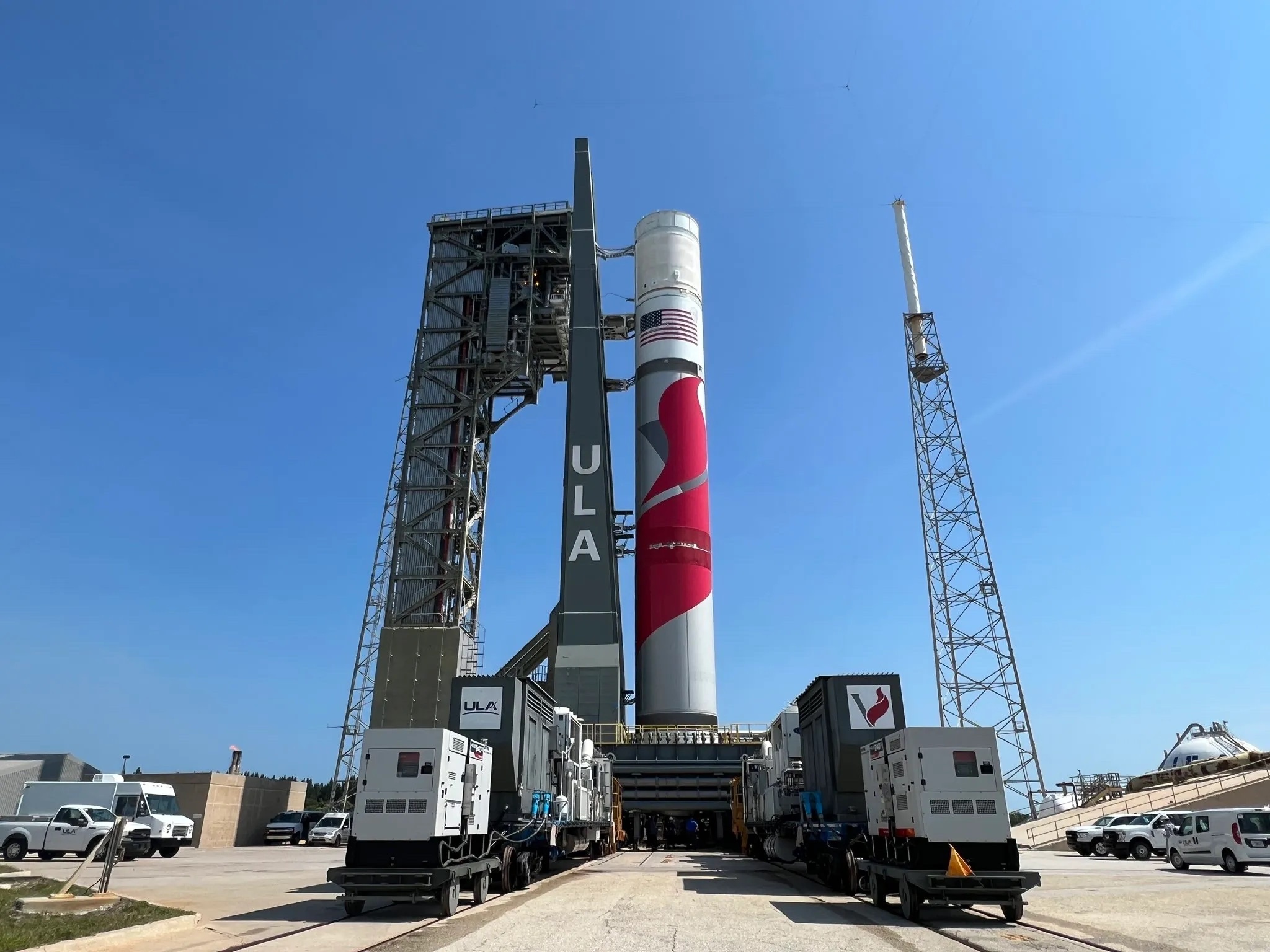
WASHINGTON — United Launch Alliance plans to resume tanking tests of its Vulcan Centaur rocket and test fire its main engines as early as next week, the company announced May 11.
“Vulcan is in position atop SLC-41 at Cape Canaveral Space Force Station to undergo a full launch day rehearsal tomorrow and flight readiness firing test of its main engines planned for next week,” ULA said.
ULA rolled the rocket on Thursday to Space Launch Complex 41 in preparation for tests.
ULA’s CEO Tory Bruno in tweets on Wednesday said Vulcan was returning to tanking tests although the investigation of a Centaur upper-stage testing anomaly that occurred on March 29 has not yet been completed.
Before the upper-stage incident, ULA had announced a May 4 target date for Vulcan’s first launch, known as Cert-1.
Targeting summer launch
Bruno on Wednesday said ULA plans to livestream the flight-readiness test firing of the BE-4 main engines. The test fire is expected to last about six seconds, he said. “A short burn, but a very long time to be on the pad.”
ULA has not provided a new target launch date for Vulcan.
“With success here, and a resolution of the Centaur V ground test anomaly, we are projecting for a Vulcan Cert-1 launch this summer,” Bruno wrote.
Cert-1 is the first of two certification launches that Vulcan must complete to be able to fly national security launch missions for the U.S. Space Force.
The debut launch will carry Astrobotic’s Peregrine lunar lander, two demonstration satellites for Amazon’s Project Kuiper broadband constellation and a payload for space memorial company Celestis.
ULA preparing for Vulcan Centaur static fire
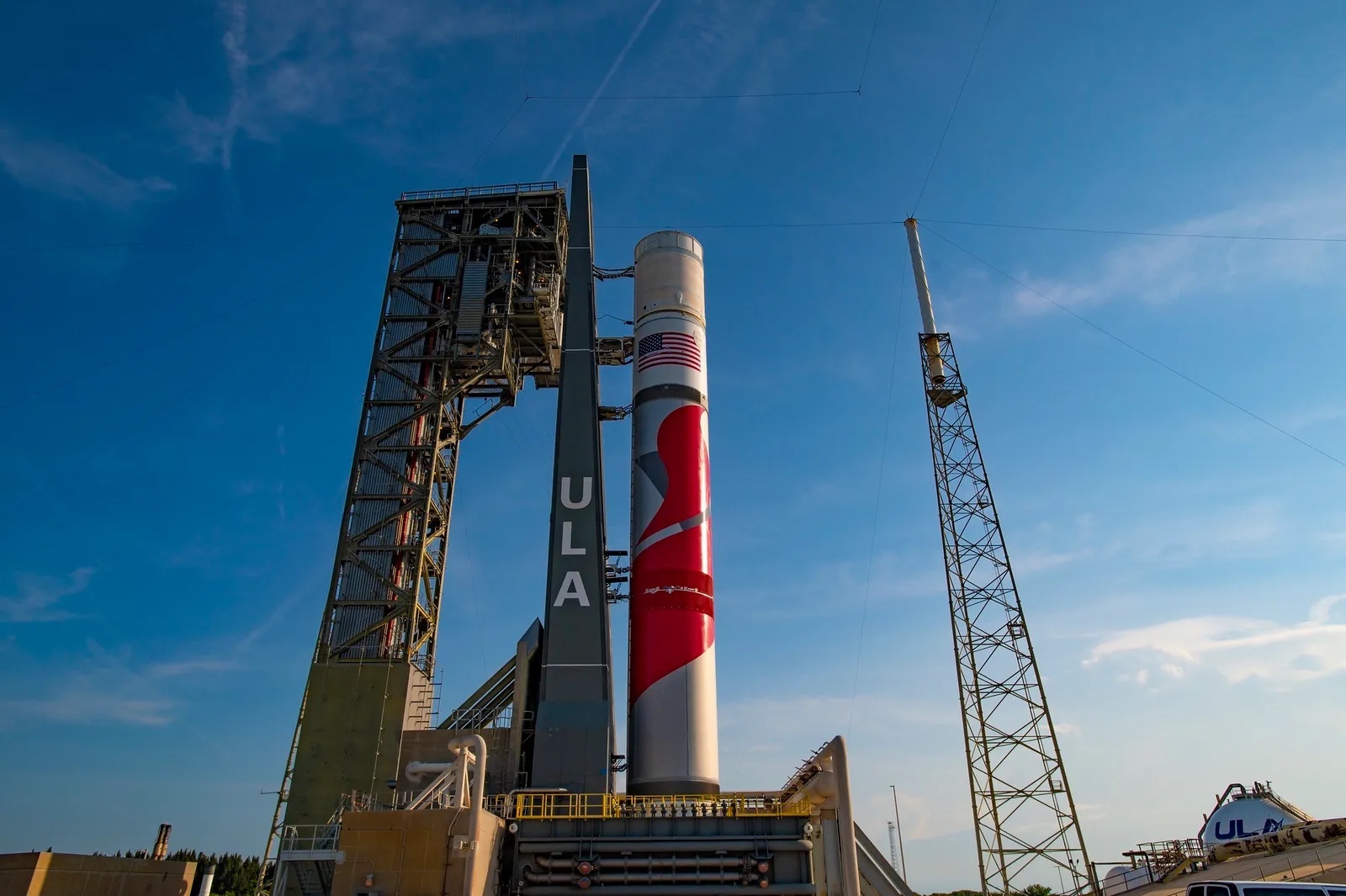
WASHINGTON — United Launch Alliance expects to conduct a static-fire test of its Vulcan Centaur rocket in several days, but the timing of the vehicle’s first launch will depend on the outcome of an ongoing investigation of a test anomaly.
ULA rolled the Vulcan rocket from the pad at Space Launch Complex 41 at Cape Canaveral, Florida, back to its Vertical Integration Facility (VIF) building on May 15. The vehicle had been on the pad for several days to conduct a tanking test and practice countdown.
Tory Bruno, president and chief executive of ULA, said in a May 15 tweet that the company needed to “adjust a handful of parameters and set points” for the vehicle before performing what the company calls the Flight Readiness Firing (FRF), a static-fire test of the booster’s BE-4 engines on the pad. That work would be done while the rocket is back in the VIF.
In a May 16 interview after a speech at the Humans to Mars Summit here, Bruno said that work involved a combination of minor adjustments to both pad infrastructure and the vehicle. The former includes adjusting set points in a hydraulics system and changing the rate of liquid oxygen flowing into the rocket to top off tanks after recycling the countdown. Those adjustments, he said, could be done in software.
On the booster, he said there was an issue during the pad tests with flowing gas through spark torch igniters used to ignite the BE-4 engines. The gas is intended to make sure that the igniters are dry and can light, but the timing was off. That could involve some combination of adjustments on the rocket and ground infrastructure.
“There’s nothing wrong with the engines,” he added. “We’ve lit the engines a zillion times on the test stand at Blue,” a reference to test stands by engine manufacturer Blue Origin.
That work is done more easily inside the VIF, he said, where there is protection from the weather and where work can continue when other range operations might cause a halt to work on the pad.
Once those fixes are complete, Bruno said the vehicle will roll back out to the pad for the FRF. “It’ll be a few days,” he said of the timing of the test, which will depend on both when the work is complete and getting approval from the range for test, which is required since it is considered an “energetic” event.
Assuming there are no problems with that firing, the last major obstacle before launch is completing an investigation into a March 29 incident during testing of the Centaur upper stage. Hydrogen leaked from the structural test article and ignited, creating a fireball.
Bruno said the investigation was delayed because it took time to remove equipment on top of the Centaur, such as a payload adapter and mass simulators for the payload and payload fairing. Only in the last week and a half was ULA able to get access to the dome section of the Centaur where the leak was located.
Engineers have isolated a small region on that dome where they believe the leak came from, as well as the likely ignition source. “I’m pretty confident that we’re going to find the leak, and once we find the leak we’ll know if we have to take corrective action or not on the flight vehicle,” he said.
If ULA doesn’t need to modify the Centaur, that would allow the Cert-1 launch to take place in early summer, he said. “If we do, it could take longer, but I don’t expect it to get out of the year.”
Complicating launch scheduling is the requirement for the primary payload, the Peregrine lunar lander from Astrobotic, which has a launch window that is open only for about four to five days per month. Before the Centaur test anomaly, ULA had been working towards a May 4 launch, which Bruno said in February was the start of a window about four days long.
“In the big picture, it’s a steel pressure vessel and it had a leak,” he said. “We’re going to understand it and we’re going to fix it. It’s not like other things that go wrong on rockets like engines that blow up. It’s just a piece of structure. We’ll fix it.”
Quelle: SN
----
Update: 26.05.2023
.
Watch Vulcan Centaur rocket test-fire its engines on the launch pad for 1st time today
The test is set for 6 p.m. on Thursday (March 25).

Update for 9 a.m. on May 25: United Launch Alliance (ULA) has confirmed the Flight Readiness Firing (FRF) test of its new Vulcan Centaur rocket will happen at 6 p.m. EDT (2200 GMT) on Thursday (May 25). Watch it here courtesy of ULA.
United Launch Alliance (ULA) is gearing up for a critical test firing of its next-generation rocket after a recent fueling check, and it could happen as soon as this week.
On Monday morning (May 22), Bruno stated on Twitter that the company's new Vulcan Centaur rocket was returning to Space Launch Complex 41 at Cape Canaveral Space Force Station. Now that the rocket is back at the pad, Vulcan's static fire test (in which the rocket's engines are ignited while it remains on the ground) could happen any day. "We are targeting as soon as tomorrow for the Flight Readiness Firing," a representative from ULA told Space.com on Tuesday (May 23), "but it will depend on range availability." On Wednesday (March 24), ULA CEO Tory Bruno intimated on Twitter that the test could happen as soon as Thursday (March 25).
If all goes according to plan, and Vulcan's static fire and wet dress rehearsal go smoothly, the rocket's first launch will be its next major milestone. Bruno has previously indicated sometime in June or July as Vulcan's earliest likely launch date, with launch windows available 4 to 5 days every month.
ULA previously completed a successful tanking test on the company's new Vulcan on May 12, filling the rocket with over a million pounds of fuel during the test. ULA engineers then evaluated the fueling test results against Vulcan's design expectations.
Two days after the successful tanking, Bruno indicated in a May 15 tweet that the tests were "good," but that teams would be making some parameter adjustments ahead of Vulcan's first static fire. That milestone moved Vulcan one step closer to its first launch, with only a static test firing of the engines and wet dress rehearsal left to validate the vehicle.
The rocket's main booster BE-4 engines use liquified natural gas (LNG) and liquid oxygen for fuel, and will be able to produce over half a million pounds of thrust at liftoff. Vulcan's Centaur V second stage RL10 engines are powered using liquid hydrogen and liquid oxygen.
The 202-foot (62-meter) Vulcan Centaur will be capable of lifting 7.7 tons (7 metric tonnes) of payload to geostationary orbit, over 22,000 miles (36,000 km) above the Earth. The rocket was designed to replace ULA's veteran Atlas V and Delta IV launch vehicles that have been in service for two decades.
Already, NASA has added Vulcan to its lineup of rockets for future missions. Amazon has also contracted ULA for 38 Vulcan launches to support the deployment of its Project Kuiper communications satellite constellation.
Quelle: SC
----
Update: 9.06.2023
.
What you need to know about United Launch Alliance's Vulcan rocket test fire
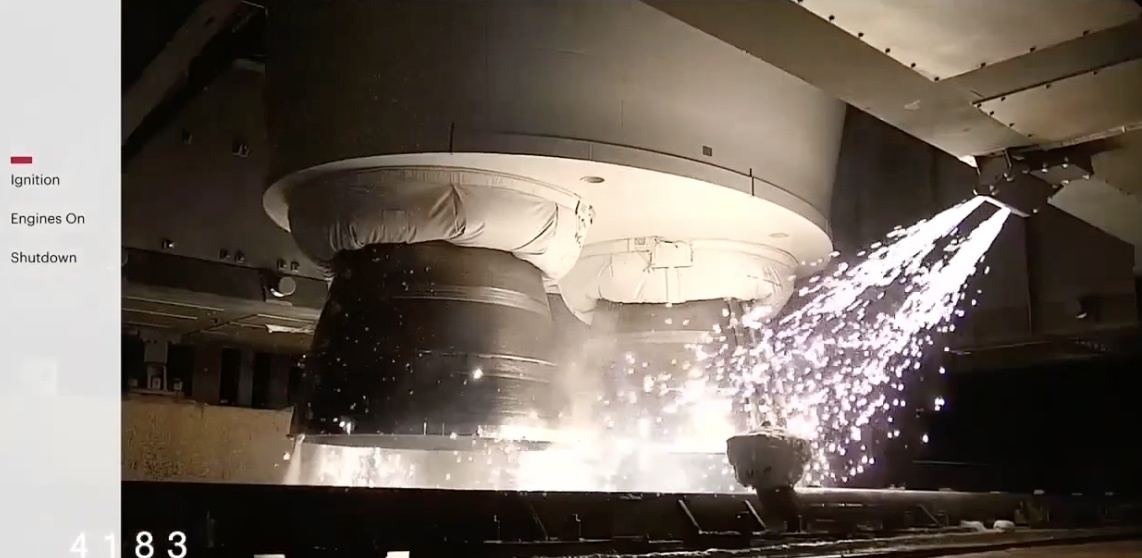
Update: (9:45 p.m. EDT, Wednesday, June 7) United Launch Alliance successfully completed a six-second engine test fire of the Vulcan rocket at 9:05 p.m. EDT at Cape Canaveral Space Force Station.
Update: (8:30 p.m. EDT, Wednesday, June 7) The window for the "flight readiness firing" of ULA's Vulcan rocket can extend for hours.
United Launch Alliance completed a six-second test fire of the two BE-4 engines of its new Vulcan Centaur rocket for the first time on its launch pad at Cape Canaveral Space Force Station at 9:05 p.m. EDT, Wednesday night, June 7.
What we know about the Vulcan Centaur test fire:
United Launch Alliance teams are working toward a first-time engine test of the company's next-generation Vulcan Centaur rocket, known as a "flight readiness firing."
ULA teams rolled the rocket to its launch pad Tuesday. Fueling procedures got underway earlier this afternoon ahead of this evening's test, which will fire up two Blue Origin-built BE-4 engines at the business end of the company's new rocket.
During the test, the engines will throttle up to full power and run for about six seconds. It's expected to generate about a million pounds of thrust, but the rocket will remain on the launchpad held down by powerful restraining mechanisms.
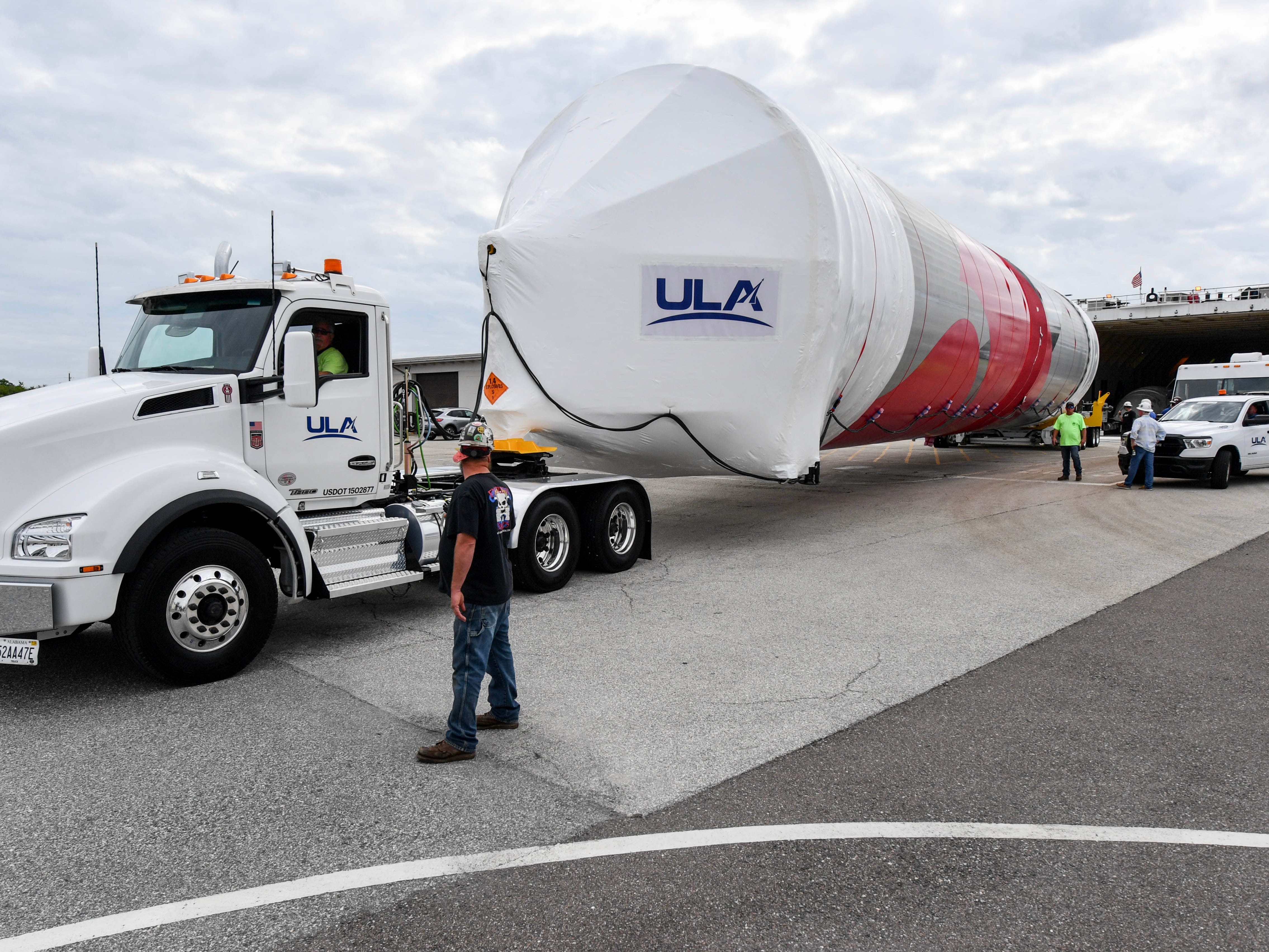
What's the purpose of the engine test fire?
The "flight readiness firing" is a critical testing milestone that the company must ace ahead of the debut flight of the Vulcan, which arrived on the Space Coast in January. Since then, ULA teams have been putting it through the testing paces, checking out everything from its fit on the pad to filling its tanks with propellants and running through mock countdowns.
"FRF is really about confirming the operational readiness of the integrated system: launch vehicle, ground systems, facilities and the associated software. In addition, we will demonstrate the ability to successfully execute the engine start sequence and validate our hot-fire abort response procedures," Dillon Rice, ULA's Vulcan launch conductor, said in a release.
Once completed it will help pave the way for the rocket's debut launch set for later this summer.
Meet Vulcan Centaur: United Launch Alliance's newest rocket at Cape Canaveral Space Force Station
What is Vulcan Centaur?
“Vulcan is a powerful rocket with a single core booster that is scalable for all missions, including heavy class performance normally requiring a Delta IV Heavy configuration,” Tory Bruno, ULA’s president and CEO, said in a release.
It’s powered by two massive BE-4 main engines, purchased from Blue Origin, and can be outfitted with up to six solid rocket boosters to provide extra thrust. It's designed to take over the launching responsibilities of the company’s aging Atlas V rocket and the soon-to-be-retired Delta IV Heavy rocket.
Standing 202 feet tall, Vulcan will liftoff from the Cape’s Pad 41, the same pad currently used to launch Atlas V rockets from Florida. Vulcan is designed to be discarded into the ocean after every launch, but ULA is working on plans to recover the valuable engine sections.
What happens after the test ends?
After the test fire, the rocket will be emptied of propellants, fully secured, and returned to United Launch Alliance's Vertical Integration Facility for pre-flight processing.
Two solid rocket boosters and the debut payload will be installed on the next-generation rocket ahead of the first demonstration mission, which could happen as early as this summer.
Quelle: Florida Today
----
Update: 26.06.2023
.
First Vulcan launch further delayed for Centaur modifications
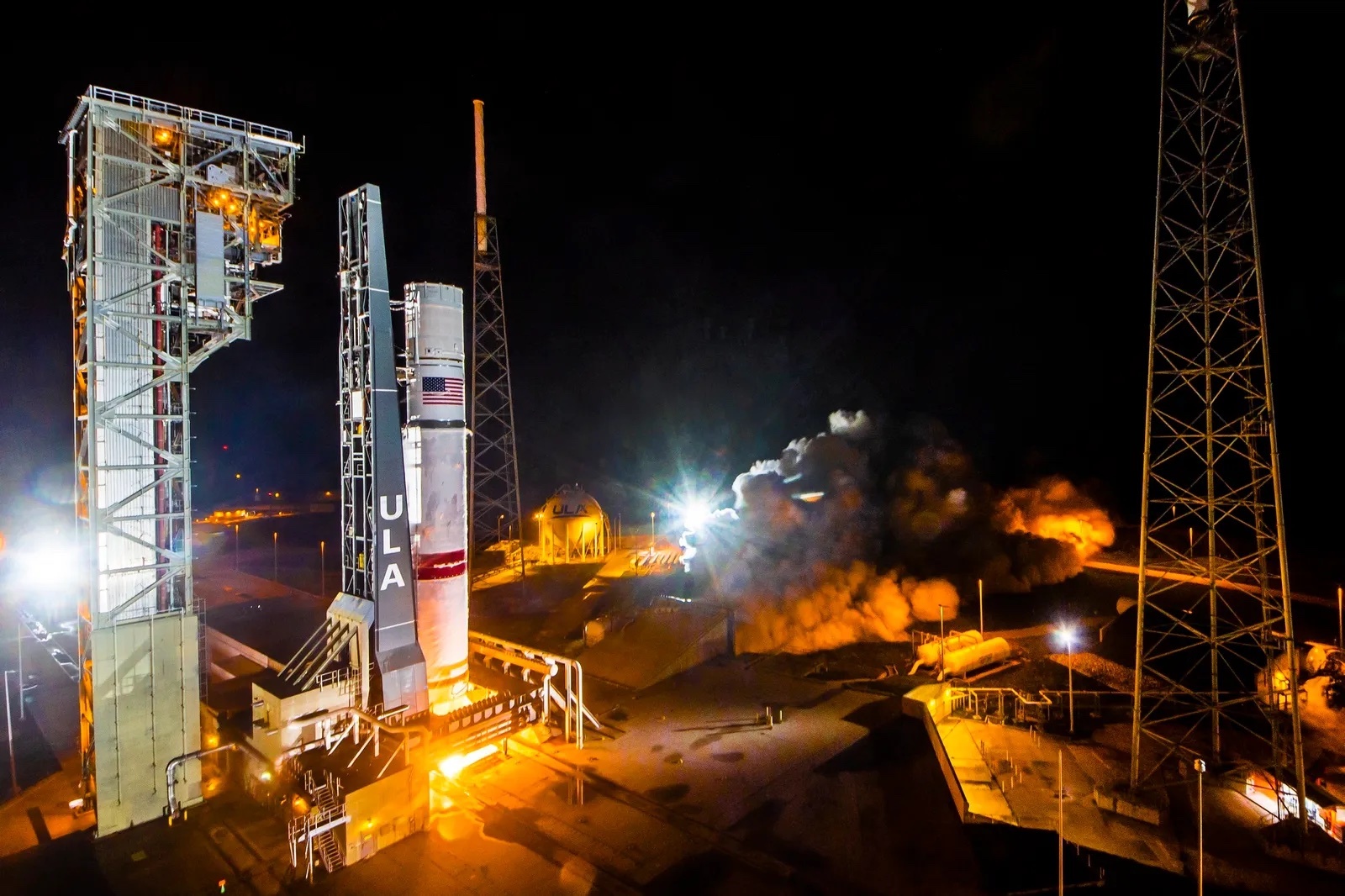
While a static-fire test of Vulcan's booster June 7 was a success, the rocket's first launch will be delayed to make "minor reinforcements" to the Centaur upper stage. Credit: ULA
WASHINGTON — The inaugural launch of United Launch Alliance’s Vulcan Centaur rocket faces new delays after the company said it needs to make “minor reinforcements” to part of the Centaur upper stage.
In a brief statement early June 24, ULA said it would remove the Centaur upper stage that had been installed on the Vulcan booster at Cape Canaveral for that inaugural launch and ship it back to the company’s Decatur, Alabama, factory. The Vulcan booster will remain at the Cape, stored in a horizontal processing facility.
The decision to destack the rocket came after ULA completed the investigation into an anomaly during a March 29 test of a Centaur at NASA’s Marshall Space Flight Center. Hydrogen leaked from the Centaur, accumulated inside the test stand and ignited, damaging the stage.
ULA said in the statement it had identified the root cause of that incident and necessary corrective actions. “Centaur’s thin-walled pressure stabilized tanks require minor reinforcement at the top of the forward dome prior to flight. We plan to de-stack the Vulcan rocket and return the Centaur V to Decatur for modifications,” the company stated.
The company said it has several Centaur stages at Decatur, one of which will be used to complete the qualification testing interrupted by the March incident.
ULA did not disclose a schedule for completing that testing, modifying the Centaur or rescheduling the inaugural launch of Centaur, a mission called Cert-1 by the company. The company said it will host a media teleconference in the next few weeks to provide more details.
In an interview in May, Tory Bruno, president and chief executive of ULA, said that if the Centaur required no modifications he expected the Cert-1 launch to take place in early summer. If Centaur modifications are needed, that launch would be further delayed, “but I don’t expect it to get out of the year.”
At the time of that interview, the last major test for Vulcan before its first launch was a static-fire test of the booster’s BE-4 engines on the pad, called the Flight Readiness Firing. That test took place June 7, and in the new statement ULA said it completed the review of data from the firing and concluded “all test objectives were successfully achieved.”
The Cert-1 launch, when it does take place, will carry as its primary payload Astrobotic’s Peregrine lunar lander. Also on the rocket will be two prototype satellites for Amazon’s Project Kuiper broadband constellation as well as a payload for space memorial company Celestis.
Quelle: SN
----
Update: 15.07.2023
.
ULA’s first Vulcan launch pushed to end of the year
After an explosion in March, the company launched an investigation into what happened to its new heavy-lift rocket during testing in Alabama.

United Launch Alliances (ULA) newest rocket, the Vulcan Centaur, is carried to a processing facility following its arrival at Cape Canaveral Space Force Station in Cape Canaveral, January 22, 2023. PAUL HENNESSY / SOPA IMAGES / LIGHTROCKET VIA GETTY IMAGES
United Launch Alliance will fly its much-anticipated heavy-lift rocket by the end of this year—and targets 2024 for its first mission with the U.S. Space Force.
Development on the Vulcan Centaur rocket is “essentially done. All the components of the rocket including the booster have been qualified, with the exception of one single item, which is the qualification of the structure of the Centaur V,” ULA CEO Tory Bruno told reporters Thursday.
ULA launched an investigation after a qualification test in March caused an explosion at NASA’s Marshall Space Flight Center in Alabama.
Bruno said the Centaur upper stage suffered an “anomaly” after a hydrogen leak developed about halfway through its 15th test run, due to ULA using a new “laser weld” on the rocket’s seams. The strength of these laser welds is “less than we had assessed,” Bruno said.
“That in itself would not have caused a failure. However, the two things together, higher loads [and] somewhat lower strength in the welds are what caused the crack to begin,” he said.
To mitigate the issue, Bruno said they are beefing up the welds with an extra layer of stainless steel.
“That's the corrective action. Not a very sophisticated or high-tech or high-risk action or design because we just simply needed to be just a little bit thicker, if it [was] just 20 percent thicker, we would not be having this [teleconference],” Bruno said.
ULA is positioning this rocket to compete against SpaceX’s Falcon 9, which is considered the workhorse in the market for medium and heavy launch vehicles.
Vulcan has been behind schedule for years, mostly due to delays in developing Vulcan’s main engine, BE-4, which is supplied by Jeff Bezos’s Blue Origin.
The new rocket, Centaur 5, has the same type of technology as ULA’s previous Centaur rocket, but scaled way up, Bruno said.
The rocket is “intended to operate far beyond low Earth orbit, where all other stages are optimized to operate, which means it's going to ascend to an altitude before it drops off its satellite as much as 20 to 40 times higher than LEO with a duration of as much as 20 to 30 times longer,” Bruno said.
The first certification flight will launch by the end of this year. The second will fly in the first half of 2024, and the first national security space launch for the Space Force will fly in the second half of 2024, Bruno said.
“We have the root cause. We have the corrective action. Corrective action is low risk, straightforward. We've already got the assets nearly built. There are many more assets, by the way. We never stopped the line on Centaur through all of this,” he said.
Despite the setback, Vulcan will still fly the same mission for the Space Force, Bruno said, called USSF-106, which will launch a navigation satellite to geostationary-Earth orbit.
The satellite, Navigation Technology Satellite-3, or NTS-3, is built by L3Harris and funded by the Air Force Research Laboratory. It will be the Pentagon’s first experimental, integrated navigation satellite system in 50 years, according to AFRL.
Since the space launch market is primarily dominated by industry leaders like ULA and SpaceX, the Pentagon has set up its next competition for satellite launches to usher new entrants into the heavy-lift market.
The Space Force announced in February that it would split the bidding for dozens of launches into two groups. “Lane 1” will include the “more risk tolerant” missions, “Lane 2” the more challenging and “critical” ones.
Quelle: Defense One
----
Update: 25.10.2023
.
ULA targets Christmas Eve for inaugural Vulcan rocket launch, CEO says
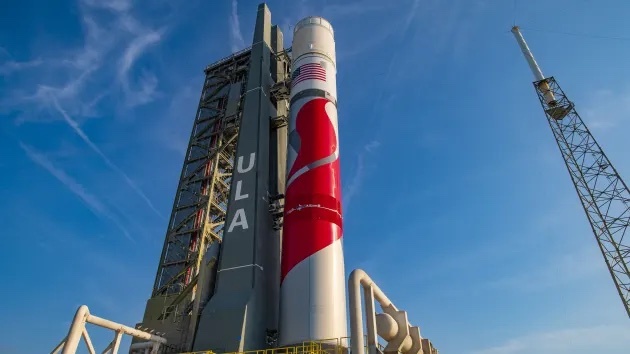
United Launch Alliance plans to launch the inaugural flight of its Vulcan rocket on Christmas Eve, CEO Tory Bruno told CNBC’s Morgan Brennan on Tuesday.
Bruno, speaking at the CNBC Technology Executive Council Summit, said the target window for Vulcan’s first launch runs between Dec. 24 and Dec. 26. The rocket will lift off from Cape Canaveral, Florida.
ULA is currently working to build and qualify the upper stage of the rocket, running those tasks “in parallel,” Bruno said, with both expected to “get done in November.”
In the event ULA misses the December window due to shipping delays or bad weather, the company — a joint venture of Boeing and Lockheed Martin — will move back the launch to January.
Vulcan’s first mission will carry a commercial lunar lander built by Astrobotic and a payload for Celestis. The latter will contain the ashes of people who wanted to be buried in space as part of a memorial service.
Previously, ULA intended the flight to include two demonstration satellites for Amazon’s Project Kuiper, but ULA separately launched those prototypes on a different rocket in early October.
ULA’s path to the first Vulcan launch faced several delays earlier this year, including the explosion of an engine during testing by its supplier Blue Origin, previously reported by CNBC.Following the incident, Bruno told CNBC in a “Manifest Space” podcast interview that the company still planned to fly its heavy-lift rocket by late 2023.
Once Vulcan launches, ULA plans to launch “several times” in 2024, Bruno said, before ramping to a rate of every other week by the second half of 2025. The company added a massive contract to launch Amazon’s Kuiper satellites to its previously government-heavy backlog for Vulcan.
“It does change the nature of our business. It makes it a lot more balanced. Before we were probably about 80% government. And now with our other commercial work in Amazon Kuiper constellation, it’s about 50-50,” Bruno said. “That’s a lot healthier place to be, because when one is out, the other is still fine.”
Quelle: CNBC
----
Update: 2.11.2023
.
Astrobotic lander arrives at launch site
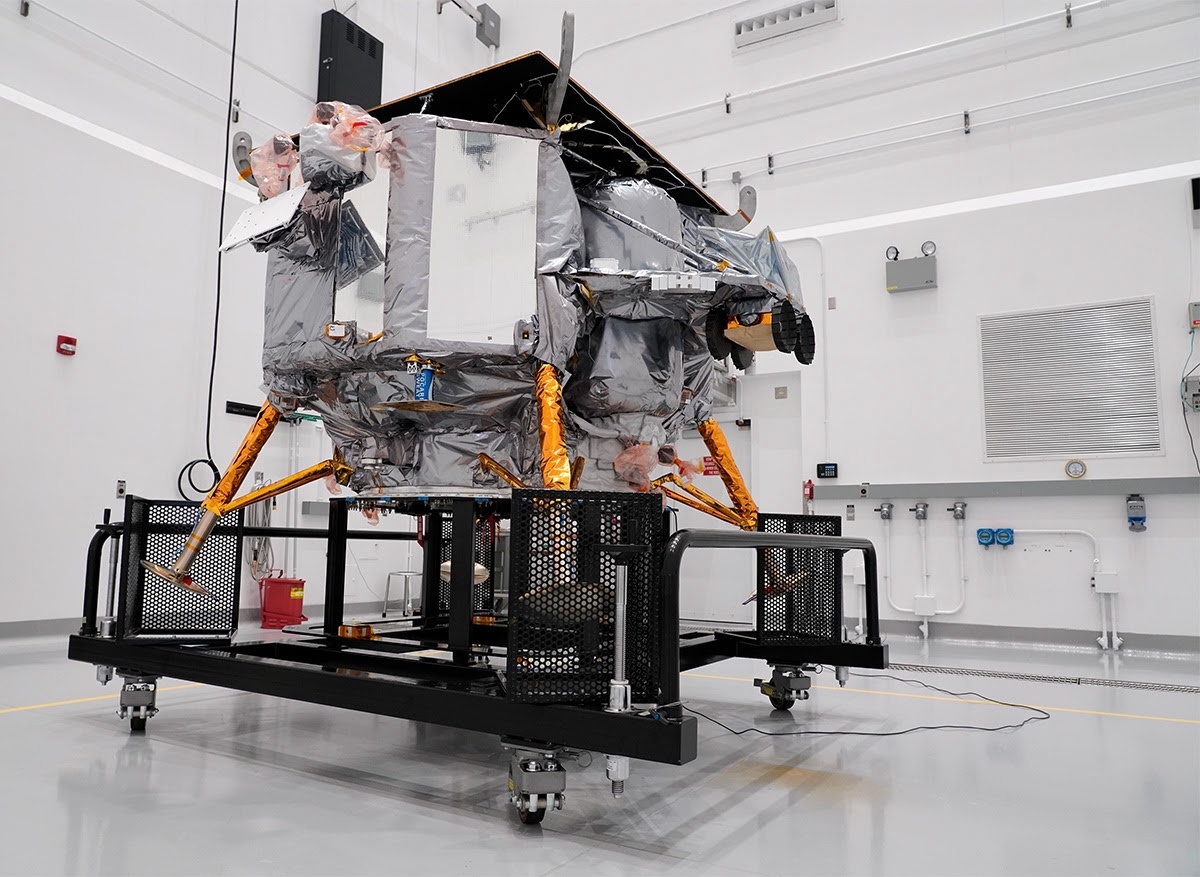
Astrobotic’s Peregrine lander has arrived at a payload processing facility ahead of its scheduled Dec. 24 launch on a Vulcan Centaur. Credit: ULA
WASHINGTON — Astrobotic’s first lunar lander has arrived in Florida for final preparations for launch on Christmas Eve.
Astrobotic announced Oct. 31 that the Peregrine lander has arrived at a payload processing facility at Cape Canaveral operated by Astrotech, after shipping last week from Astrobotic’s Pittsburgh headquarters. The lander will undergo preparations for launch on the inaugural Vulcan Centaur flight by United Launch Alliance.
The arrival of Peregrine at the launch site was a milestone years in the making for Astrobotic. “It’s incredible to realize that we are just a few short weeks away from our Peregrine spacecraft beginning its journey to the moon,” said John Thornton, Astrobotic chief executive, in a statement. “After years of dedication and hard work, we are so close to having our moonshot.”
ULA announced Oct. 24 that it set a launch date of Dec. 24 for the first Vulcan Centaur, with Peregine as the primary payload. There are backup launch opportunities on Dec. 25 and 26, and again in January, a schedule ULA Chief Executive Tory Bruno said was constrained by requirements such as lighting conditions at Peregrine’s landing site and communications access.
Peregrine is carrying 21 payloads, including several for NASA through its Commercial Lunar Payload Services (CLPS) program. Astrobotic received one of the first CLPS task orders in May 2019, valued at $79.5 million to carry what NASA said at the time was up to 14 payloads to the moon.
NASA now says it will fly five payloads on Peregrine, including a laser reflectometer and several spectrometers. Several other payloads once manifested on Peregrine were moved to other missions, NASA said, “to maintain performance margins in Peregrine’s descent to the lunar surface.”
Astrobotic’s own manifest of payloads includes a sixth from NASA, a navigation Doppler lidar instrument. Non-NASA payloads on Peregrine range from a small lunar rover developed by Carnegie Mellon University to memorial items.
Peregrine will attempt a landing in the Gruithuisen Domes region of the near side of the moon. If successful, Astrobotic plans to operate the lander for up to 10 days, until nightfall at the landing site.
The mission is now in line to be the first American commercial lunar lander mission. Intuitive Machines announced Oct. 27 that its IM-1 lander mission, which was to launch on a Falcon 9 in mid-November, was now delayed to no earlier than Jan. 12. It did not disclose the reason for the delay but previously said that “pad congestion” at Launch Complex 39A could cause it to miss its November launch window.
Quelle: SN
